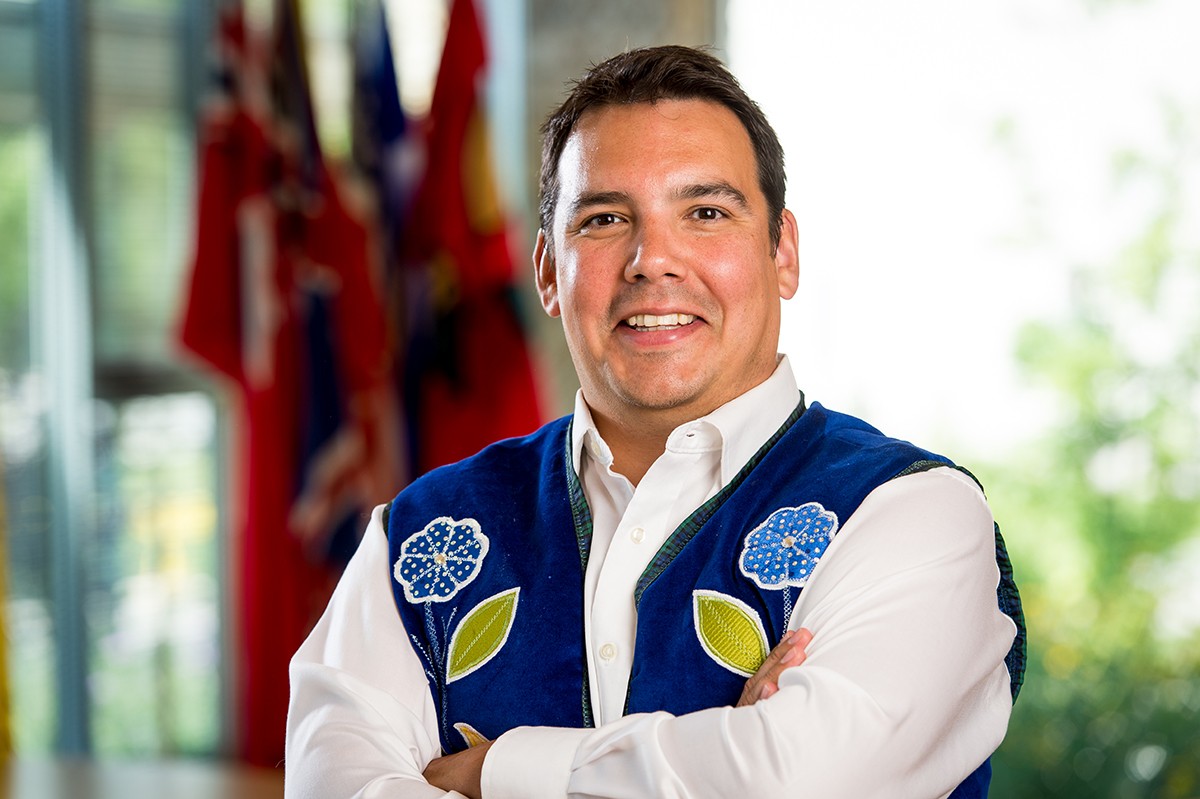
Those people, our people
Niigaan Sinclair is associate professor in the department of Native studies and a proud participant in KC Adams’s exhibit Perception. Sinclair provides his thoughts what it means to be labelled, and what this powerful exhibit by Winnipeg artist KC Adams demonstrates.
In grade two I got in trouble. I don’t remember why. Screwing around at recess, I think.
Something insignificant anyways.
Sitting in the office with my friend Keith, another Native kid, we waited for the principal to arrive and dish out the punishment.
I recall being scared. I had good reason: these were the days of the “strap.”
I got a scolding.
While we sat on uncomfortable chairs in his huge office, the principal lectured us about respect, following the rules, and doing our work.
Then he said something I’ll never forget.
“You two need to act different than other boys like you or you will never get anywhere.”
Boys like me, I thought, what does he mean by that?
Fast forward ten years.
I’m student council president at my high school in Selkirk, Manitoba, graduating with honours (ok, almost with honours).
I played sports, cared about grades, planned on university. Worked hard.
One week before graduation, while picking up my hat and gown, I run into a guidance counselor.
He asks me what my plans are. I tell him I am off on a student exchange, to South Africa.
He shakes my hand and says: “I always knew you would do well.”
“Why is that?” I ask.
“Cause you didn’t act like the other Native kids.”
And, just then, grade two made sense.
One of the things about being Indigenous in a group of non-Indigenous people is that your identity is almost always a conversation piece. This can be subtle, like in a question about your hard-to-pronounce name (“Nee-gawn-way-wah-dom,” by the way) or overt, like in a racist “Indian” joke followed by a quick look at your reaction.
The bottom line is it’s almost always talked about.
Being Indigenous in a non-Indigenous group is like wearing an elephant-size label on your forehead. Written on it, in huge 1000-size-font lettering, is “INDIAN” – or, even worse: “NOT WHITE.”
People just gotta talk about it. The font is so big, who could avoid it?
This isn’t always a problem; in fact it’s often a great conversation starter – especially in times where chit-chat is useful. It is however irritating when you’re at the doctor’s office dying from a bad cold and the nurse wants to tell you about her “Native friend.”
It’s important to talk with people where they’re at but frankly it’s exhausting to constantly do the work schools, governments, and society should be doing.
People, all people, are complex and diverse beings with histories, cultures, and stories. They have dreams, successes, and failures.
They are more than just how they look.
How they are perceived.

Perception challenges the viewer to see a series of portraits through different paradigms. The portraits confront the racist stereotypes Indigenous people face.
The real issue is that labels lead to perceptions, perceptions lead to policies, and policies lead to laws.
Somewhere in this process names like “welfare-bum,” “squaw,” and “terrorist” get thrown about – dangerous labels with punishments more significant than a principal’s scolding.
The problem with many perceptions is that there is often little-to-no attempt at meaningful communication or understanding; just quick looks, snap decisions, and actions based on incomplete information.
Perceptions require second, third, and fourth looks to be re-made. They require time, commitment, sharing.
Education.
It’s ironic that it was in school I found the most personal and professional growth but also some of the least critical thought.
It didn’t matter how good, bad, or how smart I was, in the eyes of many I would never be more than an Indian.
I would always be a perception.
This is a big reason I felt so honoured to appear among so many of my relatives and friends in KC Adams’ newest art exhibit Perception. In this work, dual images demonstrate the importance of more than one look to understand Indigenous peoples.
Perception requires that we see Indigenous peoples as complex, multi-layered, and accomplished citizens we share our bus shacks, classrooms, and communities with.
Indigenous peoples are taxpayers, homeowners, fathers, grandmothers, and award winners.
Indigenous peoples are more than “those people.”
More than “them” at all in fact.
They are us.
We are we.
And more.
So look again and let’s be.







Thanks for saying this stuff.
Beautifully said Sir!
Thank you for sharing your pesronal stories. I so relate to it. Very powerful message and information.
So true! Thanks
Beautifully written Niigaan! Thank you for sharing you sacred stories and thoughtful insights. Your spirit honors us.
well said but the whole ‘proud to say i’m a taxpayer’ narrative plays a bit too much into the hands of those who would define our humanity by such economic definitions. Nobody has to ‘pay to play’ at being human on this good Earth, I am sure you would agree.
Ahhh Mee Nung gah!
Then there are those of us that are Anisinaabae by heart and soul but the packaging is not the typical “Indian” look.
We hear and experince the negative from both sides.
This piece is just so incredible. If only all Canadians could see this. It would be a better world all together.
Very well said!